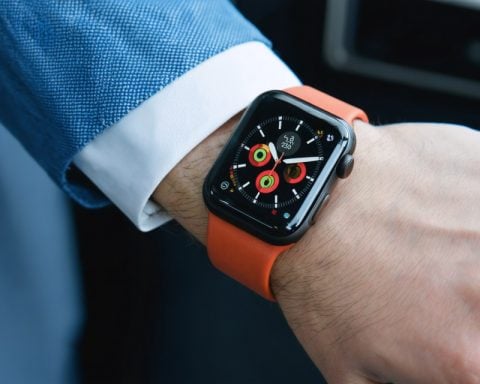- Pokémon Go was a global sensation in 2016, merging digital fantasy with real-world exploration.
- By 2023, Niantic Inc. is considering a $3.5 billion sale to Scopely Inc., owned by Saudi interests.
- John Hanke, Niantic’s visionary, pioneered digital mapping, contributing to Google Earth and creating Ingress.
- Niantic has refocused on core strengths post-pandemic, streamlining operations and enhancing AR projects.
- Niantic’s future ambitions include AI-driven geospatial mapping, potentially reshaping interactions with our environment.
- Pokémon Go’s next phase may pivot beyond gaming, heralding a new era of technological integration and innovation.
The world stood transfixed in 2016 as Pokémon Go took them on an unprecedented global quest, blending fantasy with reality. The game captivated millions, inviting players into a mesmerizing chase for digital creatures across real-world landscapes. This phenomenon sprawled like wildfire, igniting public fascination and recording-breaking app downloads.
Fast forward to 2023, and Niantic Inc., the creative minds behind this groundbreaking venture, now navigates the turbulent waters of transition. On the horizon looms a potential sale to Scopely Inc., a company under the wing of Saudi ownership. The tantalizing price? A staggering $3.5 billion.
At the heart of this saga beats the vision of one man—John Hanke. A tech evangelist, Hanke’s journey began with the development of transformational mapping technologies that shaped the digital cartography of today. From his pivotal role in Google Earth’s conception to the creation of Ingress, Hanke set the stage for Pokémon Go’s unprecedented eruption into the public consciousness.
Yet the landscape has shifted dramatically. In the wake of the pandemic, Niantic retrenched, shedding jobs and focusing anew on its pioneering title. The ambitious dreams of augmented reality evolving faster than Hanke imagined face an inevitable recalibration.
Beneath the gaming glamour, Niantic’s deeper ambitions surface—harnessing AI to map the world like never before. The Large Geospatial Model represents a new frontier, integrating diverse scenes into a cohesive, intelligent understanding of our environment.
🔍 Takeaway: As Pokémon Go gears up for a new chapter, watch closely how Niantic’s innovations might revolutionize not just gaming—but the very way we understand and interact with the world. With the rise of AI-driven geospatial technologies, the possibilities remain as vast as the virtual worlds they’ve helped create.
Is Pokémon Go Preparing to Revolutionize Gaming Once Again?
Real-World Use Cases: Pokémon Go and Beyond
Augmented Reality Applications
Pokémon Go’s phenomenal success spotlighted the potential of augmented reality (AR) in mobile gaming. By overlaying digital images on the real world, it transformed public spaces into interactive gaming arenas, blending exercise, exploration, and entertainment.
Evolving Beyond Gaming
Beyond gaming, AR holds promise in various sectors:
– Retail: Companies like IKEA and Amazon use AR to help customers visualize products in their homes.
– Healthcare: AR can assist in surgeries by providing surgeons with real-time, 3D representations of patients’ anatomy.
Market Forecasts & Industry Trends
The AR Industry Growth
According to Statista, the AR market is expected to grow from $30.7 billion in 2021 to $50.9 billion in 2024. The increasing demand for AR applications in industries such as healthcare, engineering, and education stimulates this growth.
Gaming as a Catalyst
Mobile gaming continues to drive AR innovation, with companies like Niantic at the helm. Niantic’s focus on integrating AI and AR technologies suggests further advancements that will impact broader AR applications.
Features, Specs & Pricing: Pokémon Go and Niantic’s Technology
Technical Innovations
– Large Geospatial Model: This AI-powered model aims to create a comprehensive digital layer of the physical world, enhancing user interactions across various apps.
– Real-time AI Integration: By utilizing real-time data, Niantic’s tools can potentially adapt gameplay based on environmental factors, such as weather and traffic.
Controversies & Limitations
Privacy Concerns
Like many AR applications, privacy concerns persist, particularly around data collection. Niantic must navigate these challenges to maintain user trust and comply with international data protection laws.
Technological Hurdles
Despite the advancements, AR technology faces limitations, such as battery consumption and the need for high processing power. Continued investment in hardware and software development is crucial.
Reviews & Comparisons
Competing Platforms
Niantic’s key competitors include companies like Magic Leap and Microsoft, with their respective AR solutions, Magic Leap’s spatial computing, and Microsoft’s HoloLens.
Insights & Predictions
Future of Location-Based Gaming
Niantic’s move to refine its geospatial and AI technologies positions it to spearhead innovations not only in gaming but across various sectors requiring spatial intelligence.
Potential Sale to Scopely
Scopely’s acquisition interest suggests strategic business expansion, potentially introducing Niantic’s technologies to other popular platforms and games.
Actionable Recommendations
For Gamers: Stay updated on Niantic’s advancements, as they often reflect broader trends in mobile gaming and AR technologies.
For Developers & Businesses: Explore collaborations with AR companies to integrate these technologies into your operations, potentially revolutionizing customer engagement and business processes.
Niantic’s evolution and its impact on the AR industry remain closely watched by tech enthusiasts and industry professionals. With groundbreaking technologies on the horizon, the journey beyond Pokémon Go promises to be as exciting as its inception.
For more insights on AR technologies and industry forecasts, consider visiting reputable sources like Statista and Forbes.




















